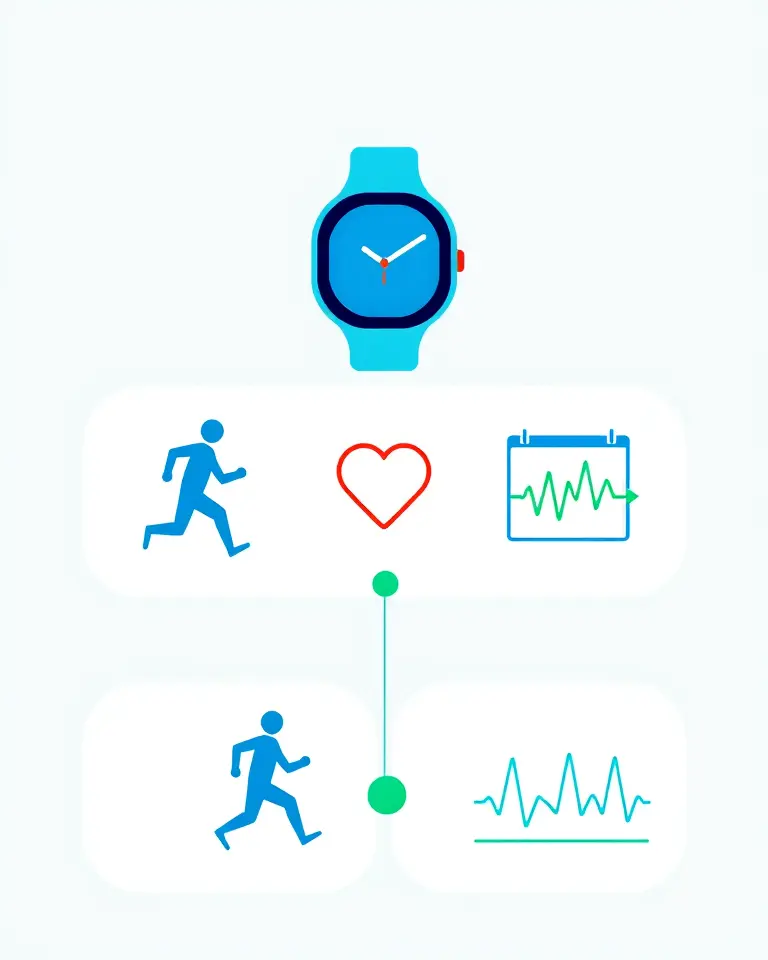The landscape of healthcare is undergoing a dramatic transformation, driven by the rapid advancements in wearable technology. Once primarily associated with fitness tracking, these devices are now poised to play a pivotal role in diagnostics, remote patient monitoring, and personalized medicine. From smartwatches that monitor heart rhythms to patches that analyze biomarkers, the potential of wearable tech in healthcare is vast and rapidly evolving.
The Rise of Health-Focused Wearables
The market for wearable medical devices is booming. Valued at $13.8 billion in 2020, it is projected to reach $37.4 billion by 2028. This growth is fueled by the increasing sophistication of the technology and the growing recognition of its potential to empower patients and revolutionize healthcare delivery.
What are Wearable Medical Devices?
Wearable medical devices are portable electronic devices worn on the body. They collect, analyze, and transmit health-related data. These devices go beyond basic fitness trackers, offering features like:
- Electrocardiogram (ECG) monitoring: Detects irregular heart rhythms.
- Blood glucose monitoring: Continuously tracks glucose levels for diabetes management.
- Blood pressure monitoring: Measures changes in blood flow.
- Oxygen saturation monitoring: Tracks the level of oxygen in the blood.
- Temperature sensing: Monitors body temperature, which can indicate illness.
- Activity and sleep tracking: Monitors physical activity levels and sleep patterns.
These devices collect granular data that patients can share with doctors and other healthcare providers. This eliminates the need for frequent in-person appointments and allows for more personalized care plans.
Empowering Patients and Providers
Wearable technology empowers patients to take a more active role in their own healthcare. By continuously tracking their health data, patients can identify patterns, make lifestyle adjustments, and take control of managing chronic conditions. This proactive approach to healthcare can lead to improved health outcomes.
For healthcare providers, wearable technology offers a new way to monitor patients remotely, receiving real-time updates on their vital signs. This allows for timely interventions, reducing the burden on healthcare facilities and enabling more efficient allocation of resources.
Wearable Technology in Chronic Disease Management
One of the most promising applications of wearable technology is in the management of chronic diseases. These devices provide continuous monitoring and personalized care, proving invaluable in the long-term management of conditions like:
- Cardiovascular Diseases: Wearables can monitor blood pressure, heart rate, and detect arrhythmias, which is vital in managing hypertension and heart disease.
- Diabetes: Continuous glucose monitors provide real-time data, helping patients manage blood sugar levels and prevent complications.
- Respiratory Conditions: Devices can track respiratory rate, oxygen saturation, and other indicators, allowing for early detection and management of conditions like asthma and COPD.
- Neurological Conditions: Wearables can assist in monitoring and predicting seizures and tracking tremors and movement disorders.
Real-Time Monitoring and Data-Driven Decisions
Wearable devices offer real-time data collection, which helps in early detection of health issues. This allows healthcare professionals to track a patient’s health status, anticipate problems, and intervene before conditions worsen. This proactive approach, paired with continuous monitoring helps in creating personalized treatment plans.
The Future of Wearable Health Tech
The future of wearable technology in healthcare is not just about new devices; it also involves:
- Artificial intelligence (AI) integration: AI algorithms can analyze data from wearables to provide more accurate diagnoses and personalized recommendations. AI-powered devices can predict seizures, monitor patient’s behavior and help with patient engagement.
- Sophisticated Sensors: The development of more advanced sensors will allow for the collection of an ever-increasing range of physiological data. Microfluidic patches can analyze biomarkers via a small adhesive, offering real-time and personalized health insights.
- Integration with electronic health records (EHRs): Seamless integration of wearable data into EHRs will provide healthcare providers with a complete picture of a patient’s health.
- Smart Clothing and Implants: Future advancements could include smart textiles that monitor health metrics and even implantable sensors for continuous monitoring.
- Remote Patient Monitoring: Wearable technology is enabling remote patient monitoring, allowing doctors to keep track of their patients’ health and make timely interventions, regardless of their location.
Challenges and Considerations
Despite the immense potential of wearable technology, several challenges need to be addressed:
Data Accuracy and Reliability
While wearable devices are becoming more accurate, they are not always perfect. Heart rate measurements can vary depending on skin tone, exercise intensity, and activity type. Calorie expenditure measurements and sleep tracking can also be unreliable. Ensuring the accuracy and reliability of data collected by wearables is essential for effective use in healthcare. Validation against clinical standards is crucial.
Data Privacy and Security
Wearable devices collect a wealth of personal health data, making privacy and security a top concern. The data collected can be vulnerable to unauthorized access, cyber risks and hacking. This can lead to potential breaches and misuse of information. It is critical to ensure that data is encrypted, securely stored, and that users are aware of the privacy implications of their devices.
Interoperability
Another challenge is the lack of interoperability between different devices and systems. The integration of wearables into health services can be difficult because software and hardware solutions vary between devices. Ensuring that data can be easily shared and compared across different platforms is crucial for widespread adoption of the technology.
Regulatory Compliance
Wearable medical devices are subject to regulatory frameworks that ensure the safety, efficacy, and quality of the devices. In the United States, the Food and Drug Administration (FDA) regulates these devices, classifying them based on their risk level. In Europe, devices must comply with the Medical Device Regulation (MDR) and obtain a CE marking. Compliance with these regulations is essential for bringing devices to market and ensuring patient safety.
Equity of Access
Ensuring equitable access to wearable technology is another important consideration. Affordability and the digital divide can limit access to these devices, potentially exacerbating health disparities. Addressing these issues is crucial to ensure that the benefits of wearable technology are shared by all.
Navigating the Future of Wearable Healthcare
Wearable technology is poised to revolutionize healthcare, offering unprecedented opportunities for preventive care, personalized medicine, and improved patient outcomes. However, it is important to address the challenges related to accuracy, privacy, security, interoperability, and equity of access to fully harness its potential.
Recommendations for the Future
To move the field forward, the following recommendations are crucial:
- Developing local standards of quality: Ensuring that wearable devices meet established standards of accuracy and reliability.
- Improving interoperability: Making it easier to share and compare data across different devices and systems.
- Ensuring access: Addressing issues of affordability and the digital divide to ensure equitable access to these devices.
- Promoting representativity: Making sure that data collected from wearables are representative of the broader population.
As wearable technology continues to advance, it will play an increasingly important role in transforming healthcare from a reactive to a proactive, patient-centered approach. By addressing the challenges and embracing the opportunities, we can harness the full potential of this technology to improve the health and well-being of individuals around the globe.







